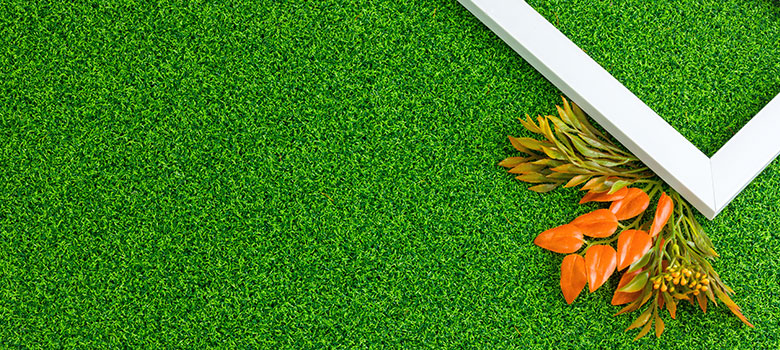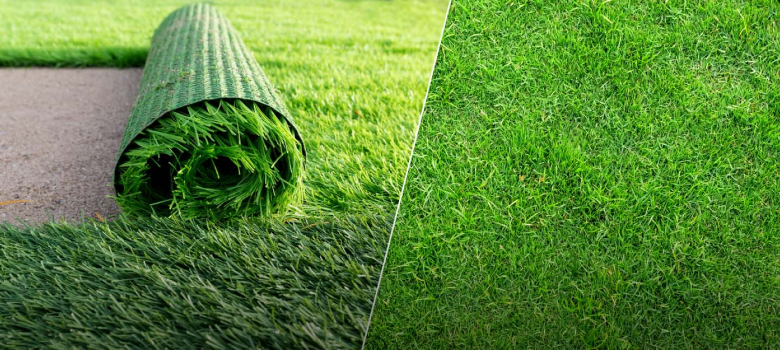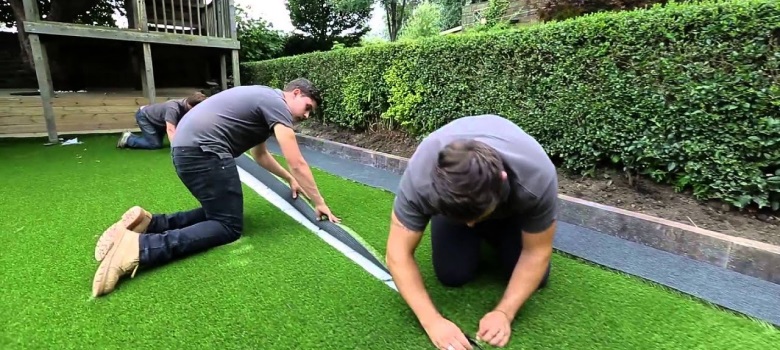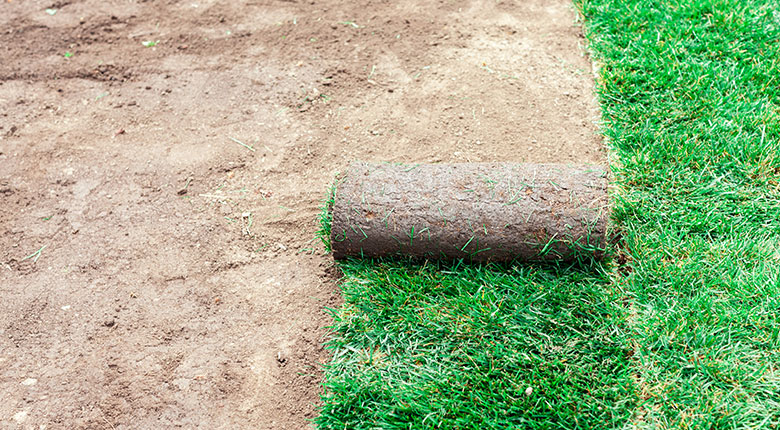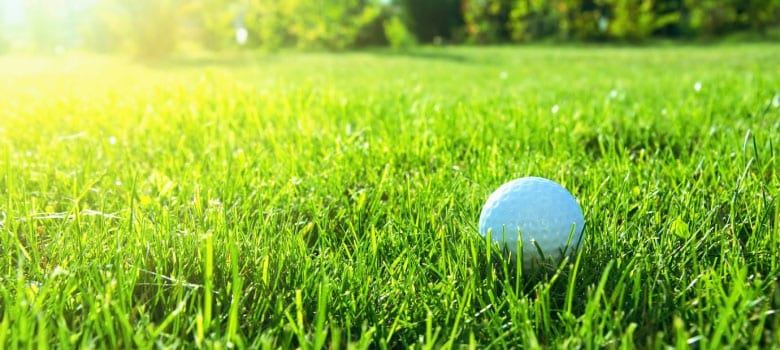You love your synthetic grass, but chances are you don’t love cleaning it.
Or, maybe you’re considering upgrading your space with artificial grass and you’re concerned about the cleaning requirements.
Worry no more.
Artificial turf is low maintenance and gives you the keys to a lush green appearance all year round. Even better, since living in Perth can mean limited water resources, artificial lawn is a practical, sustainable solution and hassle-free alternative to natural grass.
To ensure that your synthetic grass stays in top condition and continues to enhance your outdoor space, regular cleaning and maintenance are essential.
In this guide, we’ll break down the 12 simple steps on caring for your synthetic turf, allowing you to enjoy its beauty and durability for years to come.
If you want to learn more, check out our other resources:
12 Step to Clean Artificial Grass
Step One: Remove Debris
Use a leaf blower or a stiff brush to sweep away leaves, twigs, dirt, and other loose particles. It is important to perform this task regularly to prevent the debris from decomposing and potentially causing staining or damage to the grass.
Step Two: Rinse with Water
Once the debris is cleared, use a hose or a sprinkler system to rinse the synthetic lawn thoroughly. This will help remove any remaining loose dirt and dust from the surface.
Make sure to use a gentle spray setting to avoid dislodging the infill material or damaging the grass fibres. Aim to rinse the grass at least once a week or more frequently if it is subjected to heavy use or pet waste.
Step Three: Treat Stains
Stains can occasionally appear on artificial turf, especially if it is frequently used or exposed to spills. To treat stains, create a mixture of mild detergent and warm water. Gently scrub the affected area with a soft brush or sponge, focusing on the stain. Avoid using harsh chemicals or bleach as they can damage the grass. After scrubbing, rinse the area thoroughly with water to remove any residue.
Step Four: Prevent Odours
To keep your artificial lawn smelling fresh and clean, it is important to address any odours that may arise, particularly if you have pets. Regularly pick up solid waste and dispose of it properly.
For liquid waste, rinse the affected area with water to dilute and remove any residue. To eliminate odors, you can use a mixture of equal parts vinegar and water or a commercial odor-neutralising spray. Apply the solution to the affected area and let it sit for a few minutes before rinsing it off with water.
Step Five: Brush the Fibres
Over time, the fibres of synthetic grass can become flattened due to foot traffic or other factors. To maintain a natural and upright appearance, regularly brush the grass using a stiff brush or a special synthetic turf rake.
Brush against the grain to lift the fibers and restore their vertical position. This practice also helps redistribute the infill material, ensuring an even and consistent surface.
Step Six: Professional Maintenance
While regular cleaning and maintenance can go a long way in keeping your synthetic lawn in good condition, it is also beneficial to schedule professional maintenance at least once a year.
Professional maintenance services in Perth can provide deep cleaning, specialised equipment, and expertise to ensure that your artificial turf stays in optimal shape. They can perform tasks such as removing stubborn stains, reapplying infill material, and inspecting for any potential repairs or maintenance needs.
Step Seven: Protect from Sun Damage
Perth’s climate can be harsh, with intense sunlight and high temperatures. Artificial lawn is designed to withstand such conditions, but it is still important to take precautions to protect it from excessive sun damage.
Avoid placing hot objects directly on the grass, as they can melt the fibres. If your synthetic grass is in an area that receives a lot of direct sunlight, consider providing shade through the use of umbrellas, awnings, or shade sails. This will help prevent the grass from overheating and maintain its longevity.
Step Eight: Regular Inspections
Performing regular inspections of your synthetic turf is crucial to identify any potential issues early on. Check for any signs of wear and tear, such as fraying edges, loose seams, or damaged fibres.
If you notice any areas that require repair, it is best to address them promptly to prevent further damage. Inspections also allow you to assess the overall condition of your synthetic lawn and determine if any additional cleaning or maintenance is needed.
Step Nine: Pet Care
While artificial turf is pet-friendly and can withstand pet use, it is important to establish a routine for pet waste cleanup. Promptly remove solid waste and dispose of it in the proper manner. For liquid waste, rinse the area with water to dilute and remove any residue.
Consider using pet-friendly cleaners or enzymatic cleaners to eliminate any lingering odours. Regular grooming of your pets, such as trimming their nails, can also help prevent any unintentional damage to the grass fibres.
Get The Guide: How to Clean Dog Urine From Fake Grass
Step Ten: Addressing Weed Growth
One of the advantages of artificial lawn is its ability to prevent weed growth. However, it is still possible for weeds to find their way through the drainage holes or cracks in the base material.
To address weed growth, manually pull out any visible weeds or use a weed killer specifically designed for synthetic grass. Be cautious when applying weed killers, as some can cause discolouration or damage to the grass if not used correctly. Consult with professionals or refer to the manufacturer’s guidelines for recommended weed control methods.
Step Eleven: Winter Maintenance
Perth’s winters can bring occasional rainfall and cooler temperatures. During this season, it is important to adjust your cleaning routine accordingly. Regularly remove any fallen leaves or debris that may accumulate on the surface. If the grass becomes muddy or compacted, wait until it dries and gently brush it to restore its appearance.
Step Twelve: Regular Watering
While synthetic turf doesn’t require watering for growth, occasional watering can help refresh the surface and wash away dust or pollen. It can also aid in cooling down the grass during hot summer days.
Use a hose or sprinkler system to lightly spray the grass. However, be mindful of water restrictions in your area and aim to conserve water whenever possible.
Let’s Sum Up Our Synthetic Grass Cleaning Knowledge
Cleaning and maintaining your synthetic lawn in Perth is essential to ensure its longevity and keep it looking its best.
By following the 12 steps outlined in this comprehensive guide, you can effectively remove debris, rinse the surface, treat stains, prevent odors, brush the fibers, and take proactive measures to protect your artificial turf from sun damage and weed growth.
Regular inspections, proper pet care, and adapting your maintenance routine to different seasons are also crucial for maintaining a vibrant and well-kept grass surface. By investing time and effort into its care, you can continue to enjoy the beauty and convenience of artificial lawn in your Perth home for years to come.
Get Only the Very Best Artificial Grass From Evergreen Synthetic Grass
The experienced team at Evergreen Synthetic Grass will see to it that your artificial turf gets installed correctly the first time around. We’ve been installing Australian-made artificial lawns for over 20 years.
Whether it’s for a residential or commercial property in Perth, our team won’t let the grass grow under their feet, figuratively speaking of course.
If you’re in need of an accredited installer who knows the difference between silica and regular sand and is an expert in all things artificial turf, call us on (08) 9303 2130 or complete our enquiry form for a fast free quote today.

